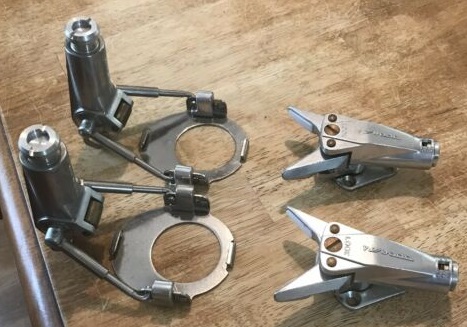
From the January 2019 issue of Skiing History magazine
As life returned to normal after World War II, skiers on both sides of the Atlantic wanted to replace their pre-war equipment. The first order of business was to dump the old leg-breaking Kandahar bindings, with their solid toe irons and long-thong wraps designed to support the ankle and prevent heel release. In 1948 the French sporting goods manufacturer Jean Beyl introduced a pivoting plate meant to prevent spiral fractures of the tibia. It didn’t release from the ski but could pivot 360 degrees in a twisting fall. By 1950 he had talked a number of French racers into using the “Antifracture” plate.
In the afterglow of liberation, the French still referred to U.S. soldiers as “Amis” (“friends”). American products had a reputation for quality and were in high demand. French companies sent production engineers to visit U.S. factories for guidance on rebuilding their own industries. Beyl wanted to give his new ski binding an American-sounding name. Besides, North America might become a healthy export market someday.
Beyl noticed that American soldiers got weekly magazines with punchy names like Time, Life and Look. He chose Look as the corporate name, after the large-format photo magazine. And he replaced the boot-length plate with an easier-to mount high-elasticity toe unit paired with a cable heel system. He called the new toe Nevada, another word evoking America despite its Spanish origin (it means “snowy mountain”).
As a product name, Look Nevada had a spectacular run. Its next redesign, in 1962, became the Nevada II and paired with the step-in Grand Prix turntable heel. That combination campaigned into the 1980s.
Beyl wasn’t finished with American magazines. In 1983 he designed Look’s releasing-clip bicycle pedal. After leaving the company, in 1987 he created an improved pedal, and called it Time. –Seth Masia
